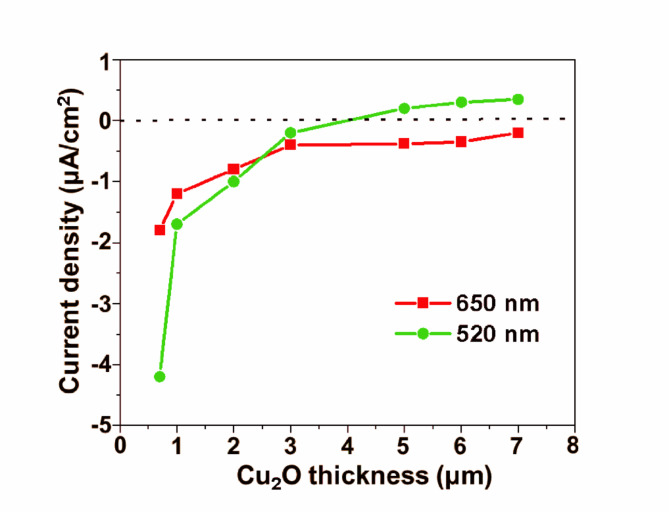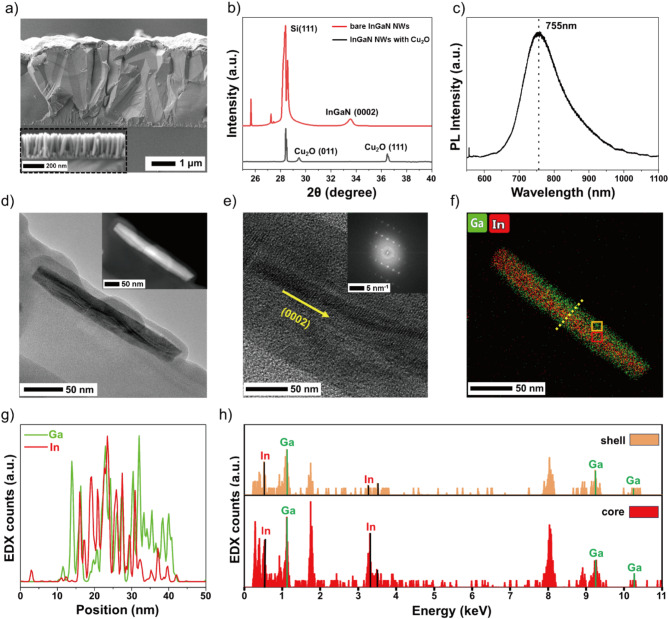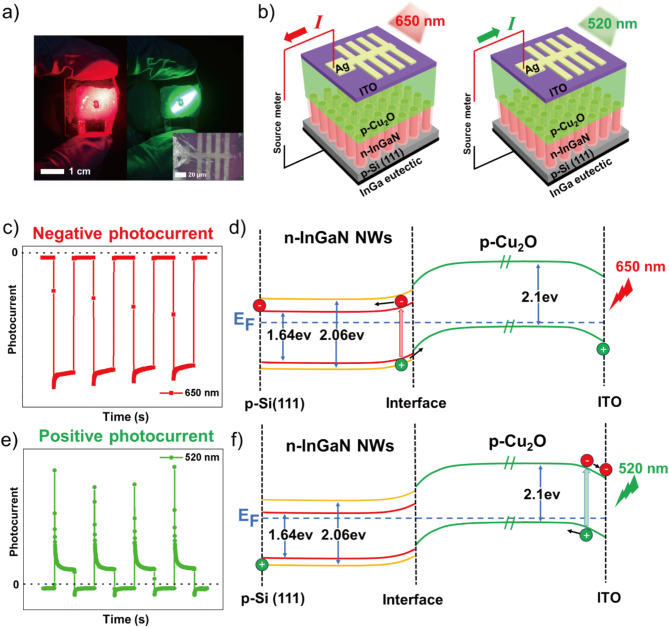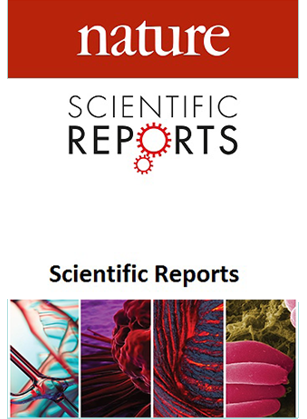实现了一种具有正负平衡光电流的红绿光电探测器。
IF 3.9
2区 综合性期刊
Q1 MULTIDISCIPLINARY SCIENCES
引用次数: 0
摘要
演示了一种双极性,用于红绿双波长检测的光伏光电探测器,其工作在自供电模式下。它是基于核壳型n-InGaN纳米线/p-Cu2O异质结构,具有内部向上能带弯曲和近表面向下能带弯曲。这对红光照明产生负光电流,对绿光照明产生正光电流。通过优化Cu2O层厚度,获得了平衡的正负光电流。通过实验证明,该成像能力可用于手机显示屏上的真实红色和绿色识别。本文章由计算机程序翻译,如有差异,请以英文原文为准。



A photodetector for red and green with balanced negative and positive photocurrent for imaging is realized.
A dual-polarity, photovoltaic photodetector for red-green dual-wavelength detection is demonstrated, operating in the self-powered mode. It is based on a core-shell n-InGaN nanowire/p-Cu2O heterostructure with inner upward energy band bending and near surface downward energy band bending. This produces negative photocurrent for red light illumination and positive photocurrent for green light illumination. Balanced negative and positive photocurrents are obtained by optimizing the Cu2O layer thickness. The imaging capability is experimentally demonstrated for real-life red and green color recognition on a mobile phone display.
求助全文
通过发布文献求助,成功后即可免费获取论文全文。
去求助
来源期刊

Scientific Reports
Natural Science Disciplines-
CiteScore
7.50
自引率
4.30%
发文量
19567
审稿时长
3.9 months
期刊介绍:
We publish original research from all areas of the natural sciences, psychology, medicine and engineering. You can learn more about what we publish by browsing our specific scientific subject areas below or explore Scientific Reports by browsing all articles and collections.
Scientific Reports has a 2-year impact factor: 4.380 (2021), and is the 6th most-cited journal in the world, with more than 540,000 citations in 2020 (Clarivate Analytics, 2021).
•Engineering
Engineering covers all aspects of engineering, technology, and applied science. It plays a crucial role in the development of technologies to address some of the world''s biggest challenges, helping to save lives and improve the way we live.
•Physical sciences
Physical sciences are those academic disciplines that aim to uncover the underlying laws of nature — often written in the language of mathematics. It is a collective term for areas of study including astronomy, chemistry, materials science and physics.
•Earth and environmental sciences
Earth and environmental sciences cover all aspects of Earth and planetary science and broadly encompass solid Earth processes, surface and atmospheric dynamics, Earth system history, climate and climate change, marine and freshwater systems, and ecology. It also considers the interactions between humans and these systems.
•Biological sciences
Biological sciences encompass all the divisions of natural sciences examining various aspects of vital processes. The concept includes anatomy, physiology, cell biology, biochemistry and biophysics, and covers all organisms from microorganisms, animals to plants.
•Health sciences
The health sciences study health, disease and healthcare. This field of study aims to develop knowledge, interventions and technology for use in healthcare to improve the treatment of patients.
 求助内容:
求助内容: 应助结果提醒方式:
应助结果提醒方式:


